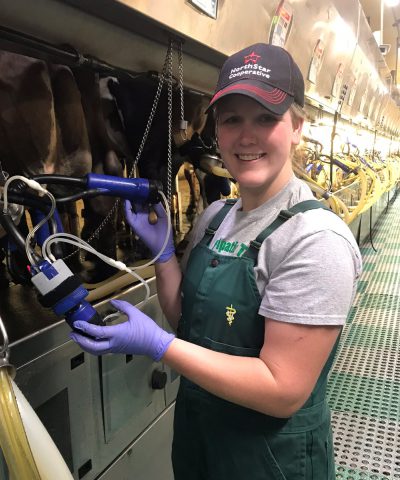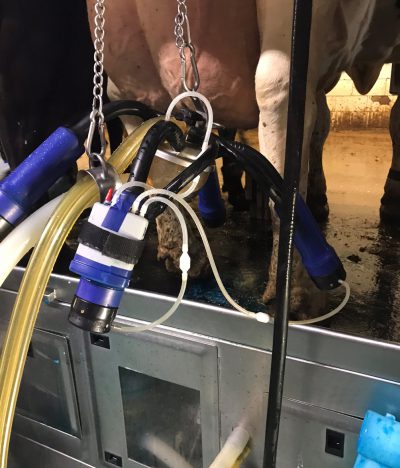By Colleen Curtiss

The dynamics for the cattle industry are dramatically changing and will continue to change. The question is, how do veterinarians adapt to the change? Vets are becoming less in-demand on the farm, and are looking for more avenues to create value to farmers. Instead of being the arm that comes to palpate, I think we need to be more of the scientific educators. More farmers are learning how to use an ultrasound themselves; as these tools become more affordable, the value of the veterinarian diminishes. As a vet, if we aren’t needed on the farm for palpation and routine procedures, we must extend into areas the farmer isn’t aware of or needs more help to understand.
This is where I think employee education and altering on-farm protocols are critical components. I have been on many ride-alongs with dairy vets, and rarely did I see them walk into the parlor. During my previous summer, I worked for Dr. Ronald Erskine at MSU and learned about the VaDia system. The VaDias record the vacuum pressure during milking to see how well the cow milks out. In previous studies, the researchers have discovered that without a proper milking routine including an adequate stimulation (time the employee spent actually massaging/wiping/stripping the teat) and lag time (from the time the cow’s teats are first touched to the time the milking unit is attached), the cow will go through a biphasic milking pattern. Biphasic pattern is when the cow starts milking for a short period then ceases milking, and then starts back up again. Why do we see this? This is because oxytocin hasn’t had enough time to reach the udder and let down the milk. Oxytocin is a hormone in the cow’s body that causes the myoendothelial cells to squeeze the alveoli to let the milk down into the teats. Research has shown that oxytocin requires approximately 90–120 seconds to reach the udder and a stimulation time of approximately 10 seconds help to release an adequate amount of oxytocin.
I can use the VaDias to get an estimated count of biphasic cows in their parlor. Then, I will take videos of the milking routine to get an estimate of lag time and stimulation time. With all of these component data elements, I can then educate the farmers and help them alter their milking routine to decrease the number of biphasic cows.

Why does it matter that we decrease the count? Researchers have discovered that it doesn’t matter if a cow is biphasic or not, they stay on the milking unit for the same amount of time. With this being said, I have seen a biphasic cow cease milking for up to two minutes! If she is only on the unit for an average of five minutes and two of the minutes are spent not milking, then this means the cow lost all that time to be letting down milk and is leaving it behind! Not only that, but all the time she spent on the unit not milking is putting teats under vacuum pressure that could be causing congestion in the teat end.
This is all knowledge a dairy vet could put to use and use as another option to add a valuable service to the farmer. This summer, I have been teaching local vets how to read collected data and how to return to the farm and not only change the milking parlor protocol as needed, but to also teach the employees why certain things are critically important.
To help the vets work better with the employees, my work offers up many instructional packets for the vets to use as teaching tools. Not only does this help to increase the vet’s value on the farm, but it also allows the vets to create a better relationship and trust with the employees. Employee turnover on farms also seems to be a big issue, so as a vet, we recommend to do quarterly or biannual meetings with the farm and get all the players involved in on-site education. We have even seen some vets to do fun games like a scavenger hunt. Employees seemed to love it, and we discovered that many didn’t know the difference between a heifer and a cow. This is one way to get value-added vet services onto the farm, but there are many options, and this can be the start.
I believe vets need to change focus from providing a specific service into more value-added programs. These program services stretch into being version of a paid business consultant. If a vet can create productivity, and charge for ideas that are not specifically health related items, the vet will become more valuable to the shrinking client base. It allows a vet to differentiate the service they provide from another vet.



